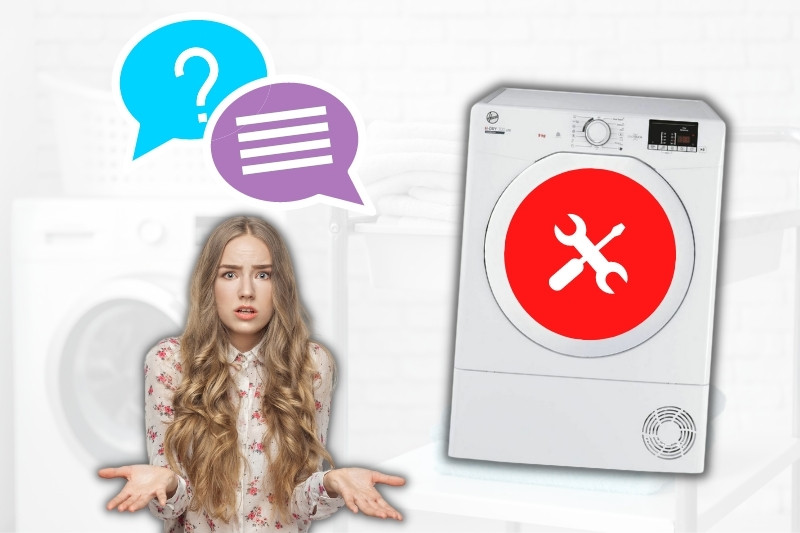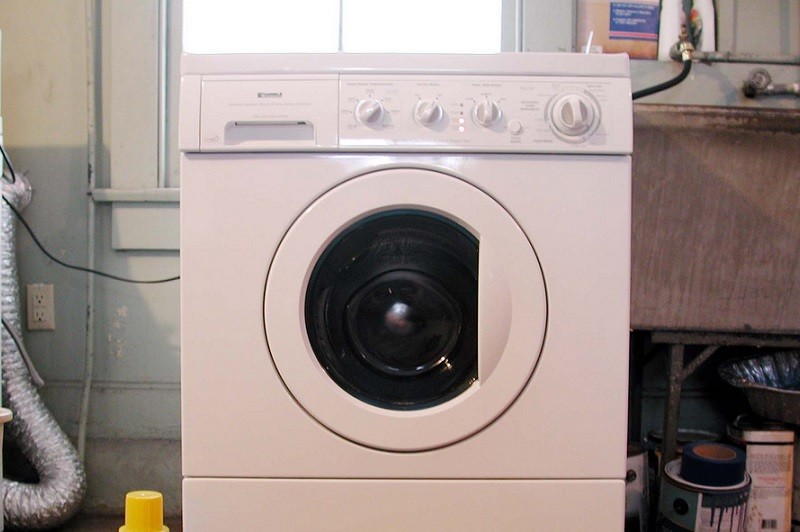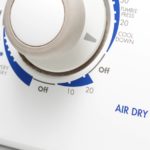There’s nothing worse than putting a load of laundry in the tumble dryer ready for you to forget all about it until it’s dry only to find that actually, your tumble dryer has stopped. There are a variety of reasons that a condenser tumble dryer could stop mid-cycle, many of which you can easily resolve yourself.
The most common reasons involve the water tank, filters, moisture sensor, or an electrical issue.
Cause 1: Full Water Tank
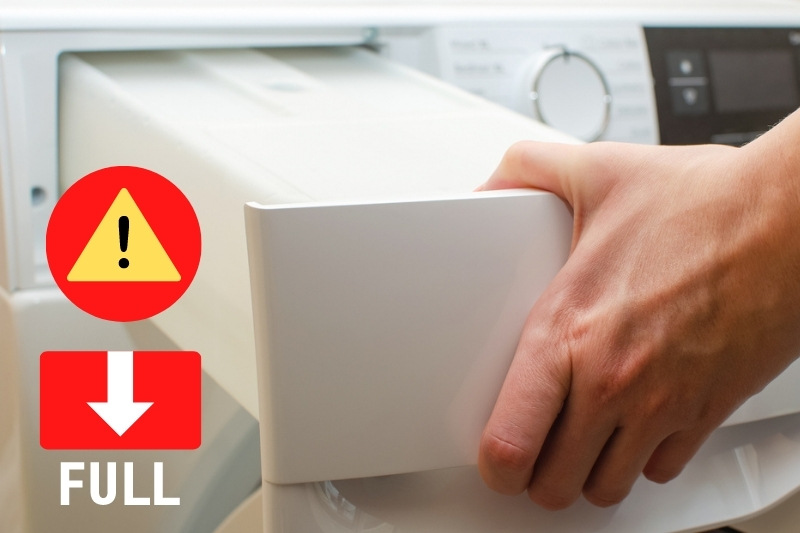
One of the most common reasons that a condenser tumble dryer stops during the cycle is that the water tank is full. If the tank is full, the machine has nowhere to put the new moisture from the drying cycle and so the machine stops to stop the machine ending up damaged.
Some machines have a status light that will tell you the water tank is full, however, not all do.
If your machine has stopped during the cycle, empty the water tank, and rinse it out to get rid of any debris or lint that might be blocking the condenser up.
Put about an inch of fresh water in the bottom of the tank (depending on your manufacturer), put the box back, and give it another go.
Cause 2: Open Door

Another common cause of a tumble dryer stopping mid-cycle is that the door has either been opened, or was not closed properly in the first place.
If you suspect this is the case, make sure the lock on the door is clear from any debris that could be stopping it from locking properly, then shut the door again before starting the machine back up.
If you can open the door when the lock should be engaged but the lock looks fine, get hold of an engineer as there is likely a fault with the locking mechanism.
Cause 3: Dirty Moisture Sensor
Many modern tumble dryers have a moisture sensor that will stop the cycle early if the laundry is dry. If the sensor is dirty, the cycle could stop prematurely.
To rectify this, you need to simply clean the sensors. If the machine is hot, let it cool down before attempting the clean otherwise you could end up burning yourself.
Where is the moisture sensor?
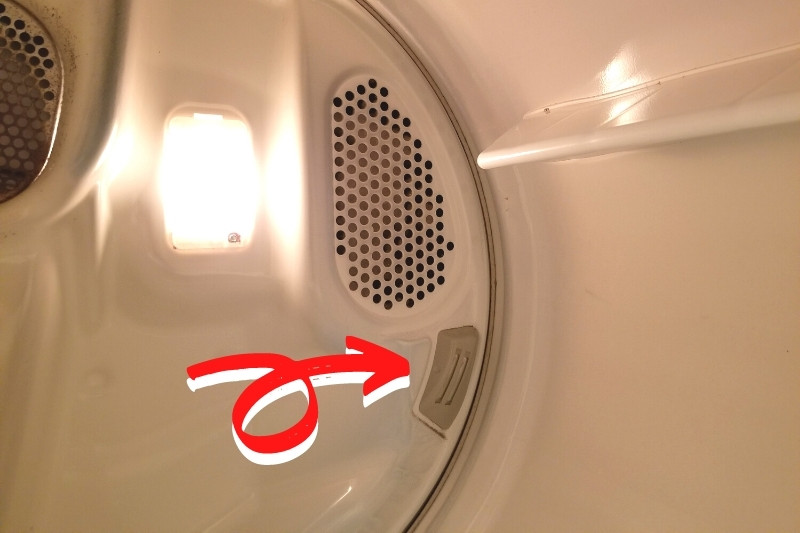
The position of the moisture sensor will depend on your washing machine. In older machines, the moisture sensor is typically at the back of the drum. In newer machines, it is more frequently next to or behind the lint filter at the front of the tumble dryer.
If you are struggling to find the moisture sensor, check with your manufacturer as every machine is different.
How to clean the moisture sensor
Once the tumble dryer has cooled down and is unplugged, you can begin cleaning the moisture sensors.
Simply wipe over the moisture sensors with a soft cloth. If the sensors are very dirty, use a cloth dipped in distilled white vinegar. Never use abrasive cleaning products or cloths as it could damage the sensor.
Make sure that the sensors are thoroughly dried again before turning the tumble dryer on.
To ensure your tumble dryer always performs at its best, you should aim to clean the moisture sensors at least once every three months.
Cause 4: Too Much or Too Little Laundry
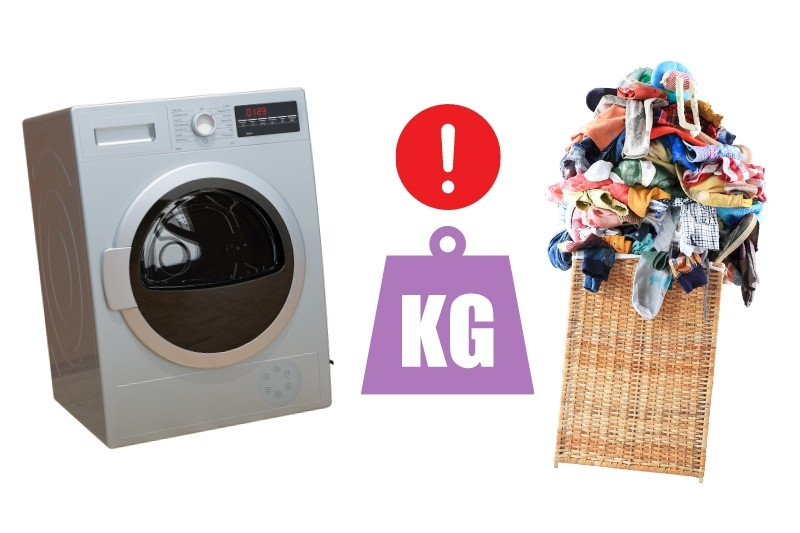
Over or underloading a tumble dryer can cause a variety of issues. The most common, however, is that it stops the moisture sensor from being able to tell whether the laundry is dry.
If there is too much laundry, the moisture can all end up trapped in the middle of the bundle. If the outside of the bundle is dry, the cycle will stop prematurely.
If there is not enough laundry in the tumble dryer, the sensors might not pick it up at all and the cycle will just end to avoid wasting electricity.
Make sure that the amount of laundry you attempt to dry at any given time is in between any weight restrictions recommended by the manufacturer.
Cause 5: Full Fluff Filter
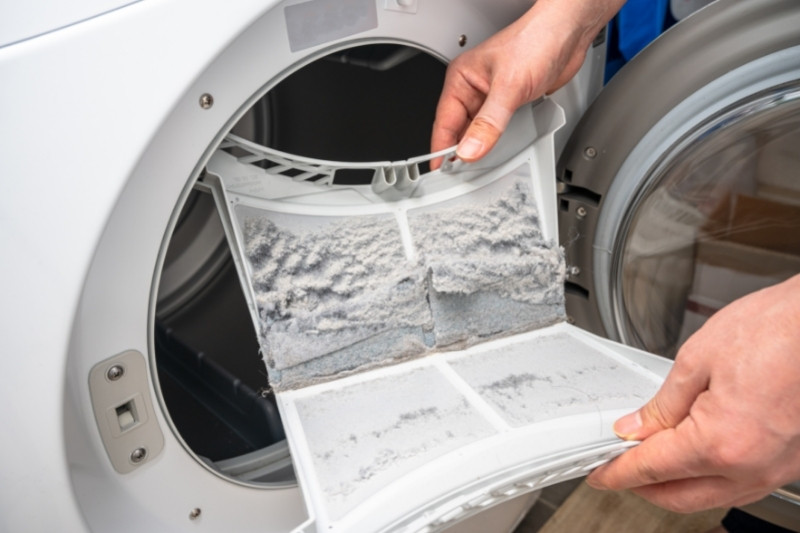
Like with the condenser unit, a modern tumble dryer is unlikely to let you complete a cycle if the fluff filter is full, as this could damage the machine.
Take the fluff filters out carefully, and remove any visible lint and debris. If the filter looks clean when it comes out, they could still be blocked up.
To check if the filter is blocked, either hold it up to the light or under a tap to see if the water runs through. If no water runs through the filter, the mesh is blocked up.
Clean the filters thoroughly again. If no water runs through after cleaning again, it is possible that the filter needs to be replaced.
Cause 6: Damaged Drive Belt
A damaged drive belt could stop a tumble dryer mid-cycle and could be the cause if you have been unable to fix the problem with any of the solutions in this article so far.
To check if this is the case, open the door and try to turn the drum by hand. If the drum spins with no resistance whatsoever, the drive belt might be damaged or faulty.
In this situation, you will need to contact a technician or the manufacturer of your machine.
Cause 7: Electrical failure
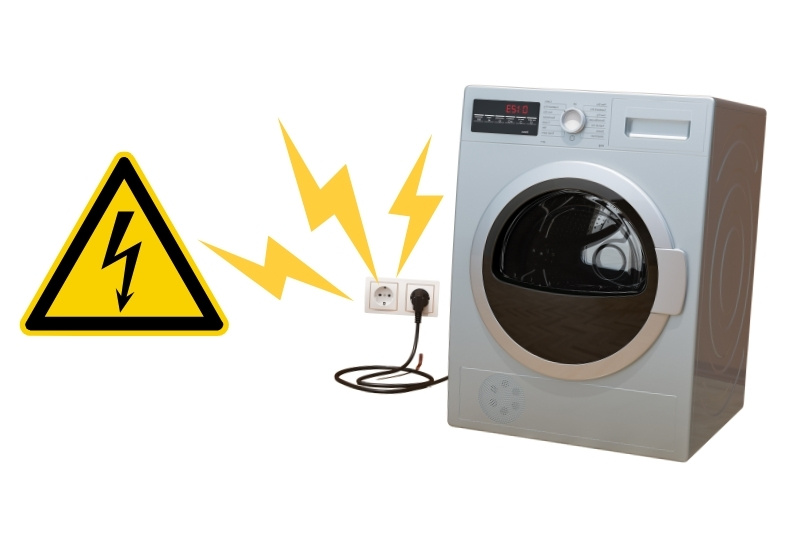
An electrical fault is a common complaint. This could be a simple electrical spike or surge, or could be something more serious.
In the case of an electrical issue, unplug the appliance completely and leave it for a couple of minutes before plugging it back in and trying again.
If the issue was a mild electrical blip, this should rectify the problem.
What Is a Condenser Tumble Dryer?

Condenser tumble dryers remove the moisture in a completely different way to a vented tumble dryer. A vented tumble dryer passes the hot, moist air outdoors through a vent, whereas in a condenser dryer, this moist air is passed through a condenser box.
In the condenser box, the moisture is condensed into water. It then collects in the container and simply needs emptying out once the box is full. Some condenser tumble dryers can be plumbed in, but most will require emptying.
This type of tumble dryer is popular because it is much more convenient than a vented dryer as it does not need to be placed near a vent or window.

Lover of coffee, painting, and all things cute and fluffy. I’m always on the lookout for easier, more gentle ways to tackle awful household chores.
